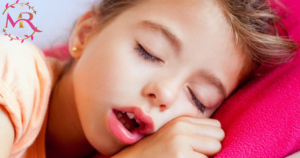Mouth Breathing in dentistry
Mouth breathing is a significant issue affecting many people, and it has a profound impact on the oral health of those affected. The primary reason behind its serious consequences lies in the dryness it induces in the mouth, subsequently leading to a reduced oral buffering capacity against the acidic by-products produced by oral bacteria. Notably, Streptococcus mutants, associated with the initiation of dental carious processes, and various lactobacilli, responsible for the progression of carious processes, are particularly affected.Causes of Mouth Breathing
This condition often arises from abnormalities in the airway passage, causing blockages or hindrances to normal nasal breathing. Consequently, individuals affected by such abnormalities are compelled to rely on breathing through the mouth.Conditions Contributing to Mouth Breathing
Various factors can contribute to mouth breathing, including allergies, chronic nasal congestion, enlarged adenoids or tonsils, a deviated septum, nasal polyps, and the shape of the nose.
Effects of Oral Breathing on Children
The most severe consequences typically occur in children during their developmental phases. Prolonged mouth breathing can alter the natural growth of children, resulting in:- Dry Mouth (Xerostomia): This can lead to carious lesions and decay, especially if the affected individual doesn’t brush before sleeping.
- Bad Breath: Reduced saliva flow results in unwashed oral surfaces, contributing to bad breath.
- Malocclusion: Forces affecting the mouth during development increase the likelihood of malocclusion, exacerbated if teeth are lost early due to increased caries risk.
- Impaired Brain Function and Development: Sleep quality is affected, leading to increased adrenaline release, which, during development, may manifest as ADHD-like behavior in affected children.
- Altered Facial Development: Mouth breathers may exhibit characteristics such as a long, narrow face, tired eyes, a crooked nose, a returned lower jaw, a smaller airway, a lack of cheekbone definition, and poor posture.
Diagnosis
Experienced healthcare providers diagnose through a physical examination, assessing the adenoids, tonsils, and nose for abnormalities indicative of mouth breathing.Diagnostic Tests for Mouth Breathing
Lip Seal Test: Evaluates the ability to breathe with a closed mouth. Mirror Test: Determines nasal breathing by assessing the presence or absence of fog on a mirror during exhalation. Water Holding Test: This test assesses an individual’s ability to hold water in their mouth.Treatment
Treatment primarily targets the underlying cause of mouth breathing. Surgical interventions, such as adenoidectomy or septoplasty, may be necessary in cases involving adenoids or deviated septum. Non-surgical approaches, like medications for chronic allergies and colds, can effectively manage cases where surgery is not required.Prevention
Understanding the risks of mouth breathing early in development is crucial for prevention. Identifying these risks allows for early intervention measures, minimizing the impact of mouth breathing and potentially restoring normal breathing patterns.Conclusion
The issue of breathing poses significant challenges to oral health, especially for children during crucial developmental phases. The intricate relationship between dry mouth, bacterial activity, and the subsequent cascade of consequences underscores the importance of addressing this condition proactively. Recognizing the diverse causes, from anatomical abnormalities to allergic conditions, provides a foundation for accurate diagnosis and tailored treatment. The detrimental effects on children, ranging from dental problems to potential impacts on brain function and facial development, highlight the urgency of preventive measures. Early identification, comprehensive diagnostic tests, and targeted treatments, whether surgical or non-surgical, form the pillars of effective management. Emphasizing the significance of oral health education and awareness, particularly in the context, is crucial for fostering a proactive approach to minimize the long-term consequences and enhance overall well-being. References:-
- Choi, J. E., et al. “Intraoral pH and temperature during sleep with and without mouth breathing.” Journal of oral rehabilitation5 (2016): 356-363.
- Zhao, Ziyi, et al. “Effects of mouth breathing on facial skeletal development in children: a systematic review and meta-analysis.” BMC Oral Health21 (2021): 1-14.
- Trabalon, Marie, and Benoist Schaal. “It takes a mouth to eat and a nose to breathe: abnormal oral respiration affects neonates’ oral competence and systemic adaptation.” International journal of pediatrics2012 (2012).
- Grippaudo, Cristina, et al. “Association between oral habits, mouth breathing and malocclusion.” Acta Otorhinolaryngologica Italica 5 (2016): 386.
- Loesche, Walter J. “Microbiology of dental decay and periodontal disease.” Medical Microbiology. 4th edition (1996).
- Tamkin, Juliette. “Impact of airway dysfunction on dental health.” Bioinformation 16.1 (2020): 26.
Doctor of Medicine, Constantine University, Algeria
Diploma in Dermatology, Plymouth University, UK
Certified from the American Academy for Anti-Ageing and Aesthetic Medicine:
Lasers, Advanced Injectables, Threads ,Chemical Peeling
